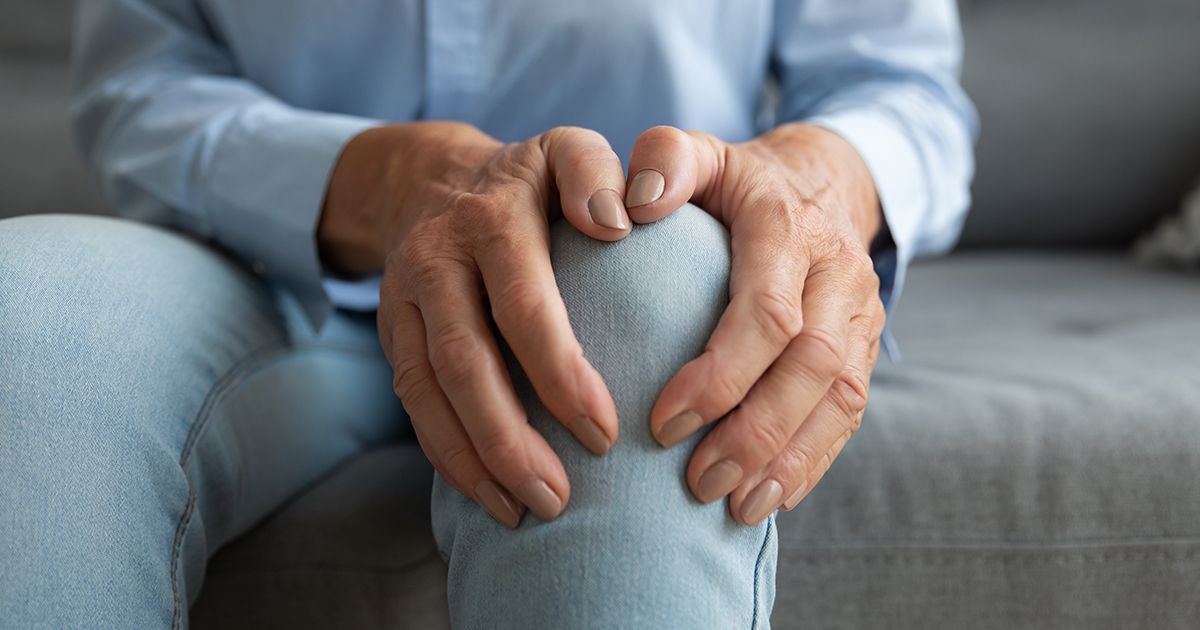
There are special considerations when treating pain in elderly individuals. Older adults are more likely to experience chronic pain due to natural changes and deficits in the body. And yet, their pain commonly goes unreported, misinterpreted, and undertreated. Why is this? Several misconceptions about pain in elderly people exist. Let’s look at a few.
Many people—patients themselves and/or their care providers—incorrectly assume that pain is just a part of aging, and it doesn’t need to be seriously considered. Most of us start experiencing regular aches and pains as early as our 40s or 50s. Depending on the frequency of use in younger years (e.g., athletics), joints can become chronically inflamed and the body’s natural cushioning can wear down, sometimes to a point that requires surgical intervention to achieve pain relief. Yet, while degeneration is natural, living in constant pain is not normal or necessary.
Inexperienced caregivers may think that if the patient isn’t complaining of pain, that pain is not an issue. But there could be many reasons a patient is not reporting their pain. They may fear that they are a burden to care for; they don’t want to create a fuss. If the person has cognitive impairment or is mostly nonverbal, they may not be able to articulate their pain.
They may have fears about taking prescribed pain medications for reasons that are discussed below.
It’s important to identify the type of pain. Acute pain has a sudden onset and has a defined cause; examples are pain from a fall-related injury, post-operative pain, and certain infections. Chronic pain continues for a long time, even years; examples include arthritis, fibromyalgia, diabetic neuropathy, and cancer-related pain.
If the person in your care says they are in pain, ask some questions to help define it. When did the pain start? Does it come and go, or is it constant? Does any action make the pain better or worse, such as changing position or using an ice pack/heating pad? A doctor or nurse will need this information for the diagnostic process and to get the patient on the road to relief.
There are, however, special considerations for treating pain in elderly people. As we age, it’s not uncommon for the heart, kidney, or liver functions to operate less than optimally, so the way the body absorbs medications may be atypical. For example, it may take longer for a medicine to leave the body, so the dosage and/or frequency may need adjusting.
Patients with comorbidities may be on multiple medications, so take extra care in discussing possible drug interactions with the doctor or pharmacist.
Certain medications carry side effects that are especially concerning for seniors. Dizziness, for example, is extra problematic for a person who already has reduced muscle strength and balance issues.
When pain goes untreated, many aspects of the patient’s life are at stake. Think about a time when you were experiencing intense pain. You probably had little energy for daily tasks and engagement. If an elderly person remains in pain for an extended amount of time, they are likely to exhibit:
Two types of drug therapies can be considered in pain management: non-narcotics and narcotics. Non-narcotics, also referred to as over-the-counter (OTC) medicines, include acetaminophen (Tylenol), nonsteroidal anti-inflammatory drugs (Advil and Aleve, among others), and aspirin. OTC drugs are highly effective in many cases, though be cautious of adverse gastrointestinal effects and possible liver malfunction, especially if overused or used regularly for a long time.
Narcotic medications may be prescribed for severe pain. These include Morphine, Fentanyl, Oxycodone/Oxycontin, Hydromorphone (Dilaudid), Hydrocodone (Vicodin), and Methadone.
Narcotics, also called opioids, attach to receptors in the nervous system to temporarily block pain signals to the brain. Narcotics are powerful medicines and, thus, can be dangerous. It’s important to communicate often with the prescriber about how the drug affects your patient so that the dose is adjusted as needed. It’s also vital that narcotics are kept in a secure place so that they are not misused by individuals for whom they were not prescribed.
Narcotic abuse is a significant problem in the United States, and the prevalence has created a stigma that prevents some people with legitimate pain from seeking help. Fear of becoming addicted is a common misconception.
The terms addiction and physical dependency are used to explain an individual’s compulsory need to seek drugs to satisfy a psychological craving and physical need. Addiction is rarely an issue for patients who are prescribed narcotics if they use the medicine as prescribed and communicate with their doctor about its effects. The doctor will be on the lookout for tolerance, a term that explains reduced effectiveness of the drug; in other words, it would take a higher dose to achieve relief. If the drug’s effectiveness wanes, a doctor might authorize a higher dose or change to a different type of narcotic. Withdrawal symptoms can occur when a narcotic is abruptly reduced or suddenly discontinued.
Narcotics may produce some unpleasant effects, constipation being the most common. (Unlike some other side effects that may go away as the body gets used to the medicine, constipation will remain.) A bowel regimen can include stool softeners or laxatives, increased liquid intake, increased exercise/movement as tolerated, and close monitoring. Other problems may include nausea, sedation, and respiratory depression.
The use of pain medications isn’t the only path to relief. Many non-pharmacological approaches to pain management can improve quality of life, even if used in conjunction with a medication regimen.
Sources: National Institute on Aging, Centers for Disease Control, American Society of Anesthesiologists, National Institutes of Health, Neuropathic Therapy Center (Loma Linda University), National Library of Medicine